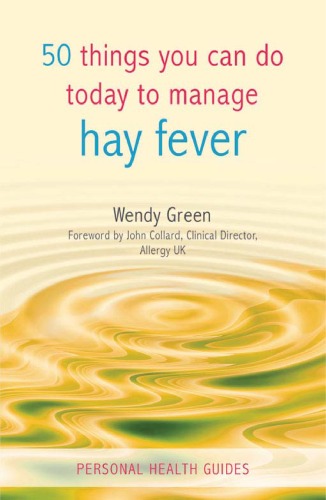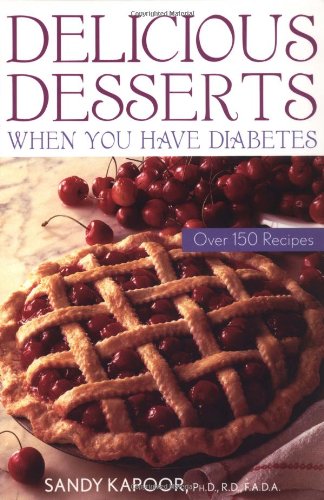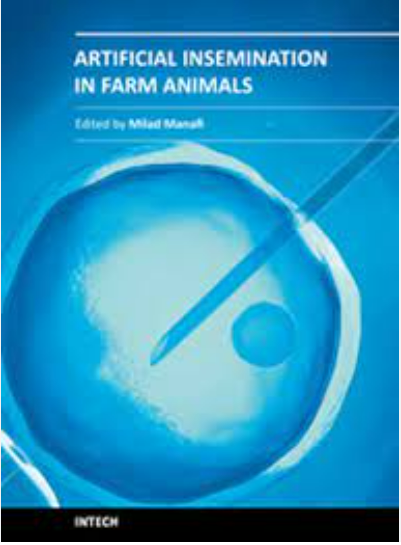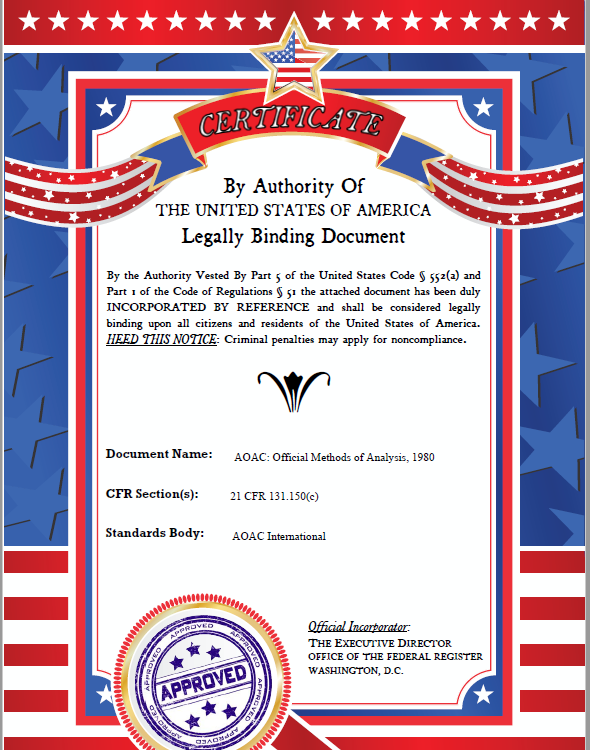CHAPTER 1
LIQUID MILK PRODUCTS
1.1 Definitions
Milk is a complex biological fluid secreted in the mammary glands of mammals. Its function is to meet the nutritional needs of neonates of the species from which the milk is derived. This section of the handbook refers mainly to bovine milk, but the milk of other species, such as sheep and goats, is used for human consumption.
Typically, bovine milk is composed of approximately 87% water, 3.7 - 3.9% fat, 3.2 - 3.5% protein, 4.8 - 4.9% carbohydrate (principally lactose), and 0.7% ash. However, the exact composition of bovine milk varies with individual animals, with breed, and with the season, diet, and phase of lactation. Milk produced in the first few days post parturition is known as colostrum. Colostrum has a very high protein content, and is rich in immunoglobulin to help protect the newborn against infections. Colostrum is not generally allowed to enter the food supply in most countries.
Fresh milk products here refers to liquid milk, which accounts for about half of the total dairy market in the UK. Liquid milk is largely heat treated in developed countries, but a small quantity of raw (unpasteurised) milk is still sold in the UK. Skimmed and semi-skimmed milk, which are defined by their fat content (0.5%, and 1.5 - 1.8%, respectively), are increasingly important products in the liquid milk market.
1.2 Initial Micro flora
1.2.1 Contamination from the udder
Although milk produced from the mammary glands of healthy animals is initially sterile, microorganisms are able to enter the udder through the teat duct opening. Gram-positive cocci, streptococci, staphylococci and micrococci; lactic acid bacteria (LAB), Pseudomonas spp. and yeast are most frequently found in milk drawn aseptically from the udder; corynebacteria are also common.
Where the mammary tissue becomes infected and inflamed; a condition known as mastitis, large numbers of microorganisms and somatic cells are usually shed into the milk. Mastitis is a very common disease in dairy cows, and may be present in a subclinical form, which can only be diagnosed by examining the milk for raised somatic cell counts. Many bacterial species are able to cause mastitis infection, but the most common are Staphylococcus aureus, Streptococcus agalactiae, Streptococcus uberis and Escherichia coli. These bacteria enter the udder by the teat duct, and Staph. aureus is able to colonise the duct itself. Although the organisms involved in mastitis are not usually able to grow in refrigerated milk, they are likely to survive, and their presence may be a cause of concern for health.
Diseased cows may also shed other human pathogens in their milk, including Mycobacterium bovis, Brucella abortus, Coxiella burnetii, Listeria monocytogenes and salmonellae. Recently, concerns have also been raised over the presence of Mycobacterium avium var. paratuberculosis (MAP) (the causative organism of Johne's disease in cattle) in milk from infected animals.
The outer surface of the udder is also a major source of microbial contamination in milk. The surface is likely to be contaminated with a variety of materials, including soil, bedding, faeces and residues of silage and other feeds. Many different microorganisms can be introduced by this means, notably salmonellae, Campylobacter spp., L. monocytogenes, psychrotrophic spore-formers, clostridia, and Enterobacteriaceae. Good animal husbandry and effective cleaning and disinfection of udders prior to milking are important in minimising contamination.
1.2.2 Other sources of contamination
Milking equipment and bulk storage tanks have been shown to make a significant contribution to the psychro trophic microflora of raw milk if not adequately sanitised (1). Exposure to inadequately cleaned equipment and contaminated air are also sources of contamination (2). Milk residues on surfaces, and in joints and rubber seals can support the growth of psychrotrophic Gram-negative organisms such as Pseudomonas, Flavobacterium, Enterobacter, Cronobacter, Klebsiella, Acinetobacter, Aeromonas, Achromobacter and Alcaligenes, and Gram-positive organisms such as Corynebacterium, Microbacterium, Micrococcus and spore-forming Bacillus and Clostridium (3). These organisms are readily removed by effective cleaning and disinfection, but they may build up as biofilms in poorly cleaned equipment. Milk-stone, a mineral deposit, may also accumulate on inadequately cleaned surfaces, especially in hard water areas. Gram-positive cocci, some lactobacilli, and Bacillus spores can colonise this material and are then protected from cleaning and disinfection. Some of these organisms may survive pasteurisation and eventually cause spoilage (4).
Other, less significant, sources of contamination include farm water supplies, farm workers and airborne microorganisms.
1.2.3 Natural antimicrobial factors
Raw milk contains a number of compounds that have some antimicrobial activity. Their purpose is to protect the udder from infection and also to protect neonates, but they may also have a role in the preservation of raw milk during storage and transport.
Lactoperoxidase is an enzyme found in milk. It has no inherent antimicrobial activity, but, in the presence of hydrogen peroxide (usually of microbial origin), it oxidises thiocyanate to produce inhibitors such as hypothiocyanite. This is referred to as the lactoperoxidase system, and it has bactericidal activity against many Gram-negative spoilage organisms, and some bacteriostatic action against many pathogens. For this reason it has been investigated as a possible means of extending the life of stored milk (5)
Lactoferrin is also found in milk and is a glycoprotein that binds iron so that it is not available to bacteria. The chelation of iron in the milk inhibits the growth of many bacteria. In addition to producing an iron- deficient environment, lactoferrin is thought to cause the release of anionic polysaccharide from the outer membrane of Gram-negative bacteria, thereby destabilising the membrane.
Lysozyme acts on components of the bacterial cell wall, causing cell lysis. Gram-positive organisms are much more susceptible to lysozyme than Gram-negatives, although bacterial spores are generally resistant.
Immunoglobulins of maternal origin are often present in milk, and colostrum is a particularly rich source. These proteins may inactivate pathogens in milk, but their significance in preservation is uncertain.
1.3 Processing and its Effects on the Microflora
1.3.1 Raw milk transport and storage
In developed countries, raw milk on the farm is usually cooled quickly and stored in refrigerated bulk tanks at <7 °C prior to collection. Collection by insulated tanker is often on alternate days, or sometimes less frequently, and therefore some of the milk in the tank could be 48 hours old at the time of collection. Temperature control is thus critical to minimise microbial growth, and tanker drivers are usually permitted to refuse milk stored at too high a temperature, or which has an abnormal appearance or odour. Bacterial numbers in the milk may increase during transport, either as a result of contamination from inadequately cleaned tankers or from the growth of psychrotrophic organisms, particularly Pseudomonas spp.. Milk temperature and duration of the transport stage are therefore important factors.
On arrival at the processing site, the milk is transferred to bulk storage tanks, or silos, prior to processing. The milk may be stored in the silos for 2 - 3 days, and further growth of psychrotrophic bacteria is likely during this period. The degree of growth is dependent on the initial microbial load, and the storage time and temperature. Pseudomonads are the predominant organisms present in stored raw milk, with Pseudomonas fluorescens, Pseudomonas fragi, and Pseudomonas lundensis being commonly isolated (6), but Enterobacteriaceae, Flavobacterium, Alcaligenes, and Gram-positive species can also be found. The growth of psychrotrophic bacteria may also be accompanied by the production of heat-stable, extracellular proteolytic and lipolytic enzymes. These enzymes are often capable of surviving pasteurisation and, in some cases, ultra high temperature (UHT) processing, and they may subsequently cause spoilage in the processed milk.
A number of techniques have been used to limit the growth of psychrotrophs during raw milk storage.
1.3.1.1 Thermisation
The most commonly used technique is to apply a mild heat treatment (thermisation), by heating to around 57 - 68 °C for 15 - 20 seconds and then cooling rapidly to <6 °C. This reduces the psychrotrophic population significantly and can extend the storage life of the raw milk by several days. However, thermisation cannot eliminate vegetative pathogens, and is therefore not a reliable control for the hazard. For example, L. monocytogenes can survive the process and could then grow during chilled storage (7).
1.3.1.2 Deep cooling
As the storage temperature is a key factor for the rate of growth of psychro trophic spoilage organisms, storing milk at as Iow a temperature as possible can also extend the storage life significantly. Reducing the storage temperature from 6 °C to 2 °C has been shown to give a 2-day gain in storage life for milk of good microbiological quality (8).
1.3.1.3 Carbon dioxide addition
There has been some interest in extending the storage life of raw milk by the addition of carbon dioxide at a concentration of 20-30 mM. Three mechanisms are thought to be involved in carbon dioxide inhibition of microorganisms: the first is by the displacement of oxygen; the second is a lowering of the pH of the milk due to the dissolution of carbon dioxide and formation of carbonic acid, particularly for Gram-negative psychrotrophic aerobes; and the third is a direct effect on the metabolisms such as inhibiting the production of enzymes by these organisms. It has also been suggested that the technique could be used to extend the shelf life of pasteurised milk, but concerns have been raised that the use of carbon dioxide addition could allow growth and toxin production by psychrotrophic Clostridium botulinum. However, recent work indicates that the risk of botulism is not increased by the use of this treatment (9).
Following storage, the milk then undergoes further processing.
1.3.2 Separation
If necessary, the milk is separated into skimmed milk, cream and sediment fractions, using centrifugal separators. The sediment may contain a comparatively high number of microorganisms and must be carefully discarded. The agitation involved may also break up clumps of bacteria, potentially producing an apparent increase in the number of colony-forming units. This process also allows the milk to be standardised to a specified fat content by adding back the correct quantity of cream.
1.3.3 Homogenisation
The fat globules in milk can coalesce and form a cream layer. Homogenisation reduces the size of the milk fat globules (to an average diameter of <1 (µm) by using a pump to force milk through a valve under pressure. The fat globules are then small enough to remain in suspension. This process has little microbiological effect, although clumps of bacterial cells may be broken up. Homogenisers used for pasteurised milk may be linked to the pasteuriser, and run at raised temperature in order to minimise possible microbial contamination. UHT processed milks are homogenised in sterile conditions after heat treatment and before aseptic filling. Effective cleaning and sterilising of the homogeniser are then critical to product safety.
1.3.4 Pasteurisation
Some form of heat process is commonly applied to milk to ensure microbiological safety, and to extend shelf life. In the UK, the most commonly used process is pasteurisation. Time-temperature requirements for pasteurisation vary between countries, and are often specified in legislation. In the UK, both low-temperature, long time (LTLT, 63 - 65 °C for 30 minutes), and high-temperature, short time (HTST, 71.7 - 72 °C for at least 15 seconds) minimum processes are permitted. However, in practice, the HTST process is now generally used. Recent concern about the possible survival of MAP in pasteurised milk (discussed further in section 1.7.2.8: MAP) has seen many dairies increase the length of the HTST process to 25 seconds. Higher processes (such as ultra-pasteurisation at 138 °C for at least 2 seconds) (3) may also be applied to products with high fat and solids content. Plate heat exchangers are the most common method for milk pasteurisation, but it is essential that they are designed, constructed and operated in such a way as to minimise the possibility of recontamination of the pasteurised milk by raw milk. Most commercial pasteurisers are fitted with sensors that continuously monitor the pasteurisation temperature, and are linked to automatic divert valves. If the pasteurisation temperature falls below a specified value, the valve opens and diverts the under-processed milk away from the post pasteurisation section of the plant and the filling line, into a divert tank. The correct operation of these monitoring systems is critical and should be regularly checked. It is also essential that there are no cross-connections between the raw and pasteurised sides of the process, and this should include separate clean-in-place (CIP) systems. It is also usual to maintain a higher pressure in the pasteurised milk to minimise the risk of cross contamination in the heat exchanger. Recontamination of this kind may have serious public health consequences (discussed further in section 1.7.1: Pathogen growth and survival in raw milk).
Accepted pasteurisation processes are designed to reduce the numbers of vegetative microbial pathogens to levels that are considered acceptable, although bacterial spores are not destroyed. Most of the potential psychrotrophic spoilage bacteria are also eliminated. However, certain heat-resistant mesophilic organisms, referred to as thermoduric, are able to survive pasteurisation. Thermoduric species commonly isolated from pasteurised milk include Micrococcus spp., Enterococcus faecium and Enterococcus faecalis, Bacillus subtilis, Bacillus cereus, and certain lactobacilli. Psychrotrophic strains of these organisms may be able to grow slowly in the pasteurised milk at 5 °C, and, if present initially in high numbers, could eventually cause spoilage. Effective cleaning of the cooling sections of pasteurisers is important to ensure that these organisms do not build up on surfaces.
1. 3.5 UHT or sterilisation processes
Milk may also be subjected to more severe heat processes sufficient to achieve "commercial sterility". This may be done by batch heating in closed containers, or continuously with aseptic filling into sterile containers. Both conventional retort sterilisation and UHT processes must achieve a minimum Fo of 3 minutes to ensure product safety. These processes destroy all vegetative cells in the milk, and the majority of spores, although certain very heat-resistant spores may survive. This results in a long shelf life without the need for refrigeration, but also causes organoleptic changes in the milk, such as browning.
Conventional sterilisation processes involve heating the milk in thick-walled glass bottles, closed with a crimped metal cap, at about 120 °C for approximately 30 minutes. However, modern large-scale production methods often use an initial UHT treatment prior to filling the container, followed by retorting for a reduced time (10 - 12 minutes), and then a rapid cooling process. This is said to give a product with improved organoleptic properties.
UHT processes may be direct or indirect. Direct systems inject high-pressure steam directly into the milk to obtain the desired temperature, and then employ flash cooling under vacuum to remove the resulting excess water. Indirect systems utilise heat exchangers and holding tubes. Direct systems are said to give better organoleptic properties, as the heating and cooling processes are very rapid, but they are more complex and expensive to install. UHT processed milk involves preserving milk by holding at a temperature of 140 - 150 °C for 1 - 2 seconds (minimum treatment is 130 °C for 1 sec) (3, 10). Heat treatment is usually followed by aseptic filling into sterile cartons or other containers. The maintenance of sterility in filling is vital to prevent recontamination of the treated milk. As with pasteurised milk, it is also vital to ensure that raw milk cannot recontaminate the UHT-treated milk.
Certain very heat-resistant spores of mesophilic bacilli, classified as Bacillus sporothermodurans (11) are able to survive UHT processes and may subsequently grow in the final product. However, this organism has been shown not to be pathogenic (12) and does not seem to cause any detectable changes to the product. Thermoduric Bacillus stearothermophilus are able to survive UHT processes and cause flat-sour spoilage (3).
(Continues...)Excerpted fromDairy ProductsbyRhea Fernandes. Copyright © 2009 Leatherhead Food International Ltd. Excerpted by permission of Leatherhead Publishing and The Royal Society of Chemistry.
All rights reserved. No part of this excerpt may be reproduced or reprinted without permission in writing from the publisher.
Excerpts are provided by Dial-A-Book Inc. solely for the personal use of visitors to this web site.
چکیده فارسی
فصل 1
محصولات شیر مایع
1.1 تعاریف
شیر یک مایع بیولوژیکی پیچیده است که در غدد پستانی پستانداران ترشح می شود. عملکرد آن تامین نیازهای تغذیه ای نوزادان از گونه هایی است که شیر از آن گرفته می شود. این بخش از کتاب راهنما عمدتاً به شیر گاو اشاره دارد، اما شیر سایر گونه ها مانند گوسفند و بز برای مصرف انسان استفاده می شود.
به طور معمول، شیر گاو تقریباً از 87٪ آب، 3.7 - 3.9٪ چربی، 3.2 - 3.5٪ پروتئین، 4.8 - 4.9٪ کربوهیدرات (عمدتا لاکتوز) و 0.7٪ خاکستر تشکیل شده است. با این حال، ترکیب دقیق شیر گاو در هر حیوان، نژاد، فصل، رژیم غذایی و مرحله شیردهی متفاوت است. شیر تولید شده در روزهای اول پس از زایمان به عنوان آغوز شناخته می شود. آغوز دارای محتوای پروتئین بسیار بالایی است و سرشار از ایمونوگلوبولین است که به محافظت از نوزاد در برابر عفونت ها کمک می کند. به طور کلی آغوز در بیشتر کشورها اجازه ورود به منابع غذایی را ندارد.
فرآورده های شیر تازه در اینجا به شیر مایع اشاره دارد که حدود نیمی از کل بازار لبنیات در بریتانیا را تشکیل می دهد. شیر مایع عمدتاً در کشورهای توسعه یافته تحت عملیات حرارتی قرار می گیرد، اما مقدار کمی شیر خام (غیر پاستوریزه) هنوز در بریتانیا فروخته می شود. شیر بدون چربی و نیمه بدون چربی که با محتوای چربی آنها (به ترتیب 0.5٪ و 1.5 - 1.8٪) تعریف می شود، محصولات مهمتری در بازار شیر مایع هستند.
1.2 میکرو فلور اولیه
1.2.1 آلودگی از پستان
اگرچه شیر تولید شده از غدد پستانی حیوانات سالم در ابتدا عقیم است، میکروارگانیسم ها می توانند از طریق دهانه مجرای پستانک وارد پستان شوند. کوکسی گرم مثبت، استرپتوکوک، استافیلوکوک و میکروکوک؛ باکتری های اسید لاکتیک (LAB)، Pseudomonas spp. و مخمر اغلب در شیری که به صورت آسپتیک از پستان گرفته می شود یافت می شود. کورینه باکتری ها نیز رایج هستند.
جایی که بافت پستانی عفونی و ملتهب می شود. وضعیتی که به عنوان ورم پستان شناخته می شود، معمولاً تعداد زیادی میکروارگانیسم و سلول های جسمی در شیر ریخته می شوند. ورم پستان یک بیماری بسیار شایع در گاوهای شیری است و ممکن است به شکل تحت بالینی وجود داشته باشد که تنها با بررسی شیر برای افزایش تعداد سلولهای سوماتیک میتوان آن را تشخیص داد. بسیاری از گونههای باکتریایی قادر به ایجاد عفونت ماستیت هستند، اما شایعترین آنها استافیلوکوکوس اورئوس، استرپتوکوک آگالاکتیه، استرپتوکوکوس اوبریس و اشریشیا کلی هستند. این باکتری ها از طریق مجرای پستانک و استاف وارد پستان می شوند. اورئوس قادر است خود مجرا را کلونیزه کند. اگرچه ارگانیسمهای درگیر در ورم پستان معمولاً قادر به رشد در شیر یخچال نیستند، اما احتمالاً زنده میمانند و وجود آنها ممکن است باعث نگرانی برای سلامتی شود.
گاوهای بیمار همچنین ممکن است سایر پاتوژنهای انسانی از جمله مایکوباکتریوم بوویس، بروسلا آبورتوس، کوکسیلا بورنتی، لیستریا مونوسیتوژنز و سالمونلا را در شیر خود دفع کنند. اخیراً نگرانیهایی درباره وجود مایکوباکتریوم آویوم وار نیز مطرح شده است. پاراتوبرکلوز (MAP) (ارگانیسم عامل بیماری جان در گاو) در شیر حیوانات آلوده.
سطح بیرونی پستان نیز منبع اصلی آلودگی میکروبی در شیر است. سطح ممکن است با مواد مختلفی از جمله خاک، بستر، مدفوع و بقایای سیلو و سایر خوراک ها آلوده باشد. بسیاری از میکروارگانیسمهای مختلف را میتوان به این وسیله معرفی کرد، به ویژه سالمونلا، کمپیلوباکتر، L. مونوسیتوژنز، هاگساز روانگردان، کلستریدیا و انتروباکتریاسه. دامداری خوب و تمیز کردن و ضدعفونی موثر پستان قبل از شیردوشی در به حداقل رساندن آلودگی مهم است.
1.2.2 سایر منابع آلودگی
تجهیزات شیردوشی و مخازن ذخیره سازی فله نشان داده شده است که اگر به اندازه کافی ضد عفونی نشده باشند، کمک قابل توجهی به میکرو فلور روان تروفیک شیر خام می کنند (1). قرار گرفتن در معرض تجهیزات ناکافی تمیز شده و هوای آلوده نیز از منابع آلودگی هستند (2). بقایای شیر بر روی سطوح و در مفاصل و درزگیرهای لاستیکی میتواند از رشد ارگانیسمهای گرم منفی روانگردان مانند پسودوموناس، فلاووباکتریوم، انتروباکتر، کرونوباکتر، کلبسیلا، اسینتوباکتر، آئروموناس، آکروموباکتر و گراموباکتر و آلکالیسم حمایت کند. میکروباکتری، میکروکوک و باسیلوس هاگ ساز و کلستریدیوم (3). این موجودات به راحتی با تمیز کردن و ضدعفونی موثر حذف می شوند، اما ممکن است به صورت بیوفیلم در تجهیزاتی که تمیز نشده اند ایجاد شوند. سنگ شیر، یک رسوب معدنی نیز ممکن است روی سطوحی که به اندازه کافی تمیز نشده اند، به خصوص در مناطق آب سخت تجمع یابد. کوکسیهای گرم مثبت، برخی لاکتوباسیلها و اسپورهای باسیلوس میتوانند این ماده را کلونی کنند و سپس از تمیز کردن و ضدعفونی محافظت میشوند. برخی از این موجودات ممکن است از پاستوریزاسیون زنده بمانند و در نهایت باعث فساد شوند (4).
منابع آلودگی کمتر مهم شامل منابع آب مزرعه، کارگران مزرعه و میکروارگانیسمهای موجود در هوا است.
1.2.3 عوامل ضد میکروبی طبیعی
شیر خام حاوی تعدادی ترکیب است که فعالیت ضد میکروبی دارند. هدف آنها محافظت از پستان در برابر عفونت و همچنین محافظت از نوزادان است، اما ممکن است در حفظ شیر خام در طول نگهداری و حمل و نقل نیز نقش داشته باشند.
لاکتوپراکسیداز آنزیمی است که در شیر یافت می شود. هیچ فعالیت ضد میکروبی ذاتی ندارد، اما در حضور پراکسید هیدروژن (معمولاً منشأ میکروبی)، تیوسیانات را اکسید می کند تا مهارکننده هایی مانند هیپوتیوسیانیت تولید کند. به این سیستم لاکتوپراکسیداز گفته میشود و دارای فعالیت باکتریکشی در برابر بسیاری از ارگانیسمهای فاسدگر گرم منفی و برخی عملکرد باکتریواستاتیک در برابر بسیاری از پاتوژنها است. به همین دلیل به عنوان وسیله ای ممکن برای افزایش عمر شیر ذخیره شده مورد بررسی قرار گرفته است (5)
لاکتوفرین در شیر نیز یافت میشود و یک گلیکوپروتئین است که آهن را بهگونهای متصل میکند که در دسترس باکتریها نیست. کلات آهن موجود در شیر از رشد بسیاری از باکتری ها جلوگیری می کند. تصور میشود لاکتوفرین علاوه بر ایجاد محیطی با کمبود آهن، باعث آزاد شدن پلی ساکارید آنیونی از غشای خارجی باکتریهای گرم منفی میشود و در نتیجه غشا را بیثبات میکند.
لیزوزیم روی اجزای دیواره سلولی باکتری اثر میکند و باعث لیز سلولی میشود. ارگانیسم های گرم مثبت بسیار بیشتر از گرم منفی ها به لیزوزیم حساس هستند، اگرچه هاگ های باکتری معمولاً مقاوم هستند.
ایمونوگلوبولینهای منشأ مادری اغلب در شیر وجود دارند و آغوز منبع غنی خاصی است. این پروتئین ها ممکن است پاتوژن های موجود در شیر را غیرفعال کنند، اما اهمیت آنها در نگهداری نامشخص است.
1.3 پردازش و اثرات آن بر میکرو فلور
1.3.1 حمل و نقل و ذخیره شیر خام
در کشورهای توسعهیافته، شیر خام در مزرعه معمولاً به سرعت خنک میشود و قبل از جمعآوری در مخازن فله در یخچال در دمای کمتر از ۷ درجه سانتیگراد نگهداری میشود. جمع آوری توسط تانکر عایق اغلب در روزهای متناوب یا گاهی اوقات کمتر انجام می شود و بنابراین مقداری از شیر در مخزن ممکن است در زمان جمع آوری 48 ساعت عمر داشته باشد. بنابراین کنترل دما برای به حداقل رساندن رشد میکروبی بسیار مهم است و رانندگان تانکر معمولاً مجازند شیر ذخیره شده در دمای خیلی بالا یا ظاهر یا بوی غیرعادی را رد کنند. تعداد باکتریها در شیر ممکن است در طول حمل و نقل افزایش یابد، یا در نتیجه آلودگی تانکرهایی که به اندازه کافی تمیز نشدهاند یا در نتیجه رشد ارگانیسمهای روانگردان، بهویژه Pseudomonas spp.. بنابراین دمای شیر و مدت مرحله انتقال از عوامل مهم هستند.
در بدو ورود به محل فرآوری، شیر قبل از فرآوری به مخازن ذخیره فله یا سیلوها منتقل می شود. شیر ممکن است به مدت 2 تا 3 روز در سیلوها نگهداری شود و رشد بیشتر باکتری های روانگردان در این دوره محتمل است. درجه رشد به بار میکروبی اولیه و زمان نگهداری و دما بستگی دارد. سودومونادها ارگانیسمهای غالب موجود در شیر خام ذخیرهشده هستند، پسودوموناس فلورسنس، سودوموناس فراگی، و پسودوموناس لوندنسیس معمولاً جدا شدهاند (6)، اما انتروباکتریاسه، فلاووباکتریوم، آلکالیژنز و گرام نیز میتوانند یافت شوند. رشد باکتری های سایکروتروف نیز ممکن است با تولید آنزیم های پروتئولیتیک خارج سلولی و لیپولیتیک پایدار در برابر حرارت همراه باشد. این آنزیمها اغلب میتوانند از پاستوریزه شدن و در برخی موارد پردازش در دمای فوقالعاده (UHT) جان سالم به در ببرند و متعاقباً ممکن است باعث فساد در شیر فرآوریشده شوند.
تعدادی از تکنیک ها برای محدود کردن رشد سایکروتروف ها در طول ذخیره سازی شیر خام استفاده شده است.
1.3.1.1 حرارت دادن
متداولترین روش استفاده از عملیات حرارتی ملایم (ترمیزاسیون)، با حرارت دادن به دمای حدود 57 تا 68 درجه سانتیگراد به مدت 15 تا 20 ثانیه و سپس سرد کردن سریع تا <6 درجه سانتیگراد است. این امر جمعیت روانگردان را به میزان قابل توجهی کاهش می دهد و می تواند عمر نگهداری شیر خام را چندین روز افزایش دهد. با این حال، ترمیزاسیون نمی تواند پاتوژن های رویشی را از بین ببرد، و بنابراین کنترل قابل اعتمادی برای خطر نیست. به عنوان مثال، L. monocytogenes میتواند از این فرآیند جان سالم به در ببرد و سپس در طول ذخیرهسازی سرد رشد کند (7).
1.3.1.2 خنک کننده عمیق
از آنجایی که دمای ذخیرهسازی یک عامل کلیدی برای سرعت رشد موجودات فاسد روانگریز است، نگهداری شیر در دمای حداکثر ممکن میتواند طول عمر نگهداری را به میزان قابل توجهی افزایش دهد. نشان داده شده است که کاهش دمای نگهداری از 6 درجه سانتیگراد به 2 درجه سانتیگراد باعث افزایش عمر نگهداری 2 روزه شیر با کیفیت میکروبیولوژیکی خوب می شود (8).
1.3.1.3 افزودن دی اکسید کربن
علاقههایی به افزایش عمر نگهداری شیر خام با افزودن دیاکسید کربن در غلظت 20-30 میلیمولار وجود دارد. تصور می شود که سه مکانیسم در مهار دی اکسید کربن میکروارگانیسم ها دخیل هستند: اولین مکانیسم با جابجایی اکسیژن است. دوم کاهش pH شیر به دلیل انحلال دی اکسید کربن و تشکیل اسید کربنیک، به ویژه برای هوازی های روانگردان گرم منفی. و سوم تأثیر مستقیم بر متابولیسم ها مانند مهار تولید آنزیم توسط این موجودات است. همچنین پیشنهاد شده است که از این روش میتوان برای افزایش عمر ماندگاری شیر پاستوریزه استفاده کرد، اما نگرانیهایی وجود دارد که استفاده از افزودن دیاکسید کربن میتواند باعث رشد و تولید سم توسط کلستریدیوم بوتولینوم روانگردان شود. با این حال، کار اخیر نشان می دهد که خطر بوتولیسم با استفاده از این درمان افزایش نمی یابد (9).
پس از ذخیره سازی، شیر تحت پردازش بیشتری قرار می گیرد.
1.3.2 جداسازی
در صورت لزوم، شیر را با استفاده از جداکننده های گریز از مرکز به شیر بدون چربی، خامه و بخش های رسوبی جدا می کنند. این رسوب ممکن است حاوی تعداد نسبتاً بالایی از میکروارگانیسم ها باشد و باید به دقت دور ریخته شود. تحریک درگیر همچنین ممکن است توده های باکتری را بشکند و به طور بالقوه افزایش آشکاری در تعداد واحدهای تشکیل دهنده کلنی ایجاد کند. این فرآیند همچنین به شیر اجازه میدهد تا با اضافه کردن مقدار صحیح خامه، به میزان چربی مشخصی استاندارد شود.
1.3.3 همگن سازی
گلبول های چربی موجود در شیر می توانند با هم ترکیب شوند و یک لایه کرم تشکیل دهند. همگن سازی اندازه گلبول های چربی شیر را کاهش می دهد (به قطر متوسط کمتر از 1 (μm) با استفاده از یک پمپ برای وادار کردن شیر به داخل دریچه تحت فشار. سپس گلبول های چربی به اندازه ای کوچک هستند که در حالت تعلیق باقی می مانند. این فرآیند میکروبیولوژیکی کمی دارد. هموژنایزرهای مورد استفاده برای شیر پاستوریزه ممکن است به پاستوریزه متصل شوند و برای به حداقل رساندن آلودگی میکروبی احتمالی در دمای بالا کار کنند. پر کردن آسپتیک. تمیز کردن و استریل کردن موثر هموژنایزر برای ایمنی محصول بسیار مهم است.
1.3.4 پاستوریزاسیون
برای اطمینان از ایمنی میکروبیولوژیکی و افزایش عمر مفید معمولاً نوعی فرآیند گرمایی روی شیر اعمال میشود. در انگلستان، متداول ترین فرآیند مورد استفاده پاستوریزاسیون است. الزامات زمانی و دمایی برای پاستوریزاسیون بین کشورها متفاوت است و اغلب در قوانین مشخص شده است. در بریتانیا، هم حداقل فرآیندهای با دمای پایین و طولانی (LTLT، 63 - 65 درجه سانتیگراد برای 30 دقیقه)، و دمای بالا و زمان کوتاه (HTST، 71.7 - 72 درجه سانتیگراد برای حداقل 15 ثانیه) مجاز هستند. با این حال، در عمل، فرآیند HTST در حال حاضر به طور کلی استفاده می شود. نگرانی اخیر در مورد بقای احتمالی MAP در شیر پاستوریزه (که بیشتر در بخش 1.7.2.8: MAP مورد بحث قرار گرفت) باعث شده است که بسیاری از لبنیات طول فرآیند HTST را به 25 ثانیه افزایش دهند. فرآیندهای بالاتر (مانند پاستوریزاسیون فوق العاده در دمای 138 درجه سانتیگراد برای حداقل 2 ثانیه) (3) همچنین ممکن است برای محصولات با محتوای چربی و مواد جامد بالا اعمال شود. مبدل های حرارتی صفحه ای رایج ترین روش برای پاستوریزاسیون شیر هستند، اما ضروری است که به گونه ای طراحی، ساخته و کار کنند که احتمال آلودگی مجدد شیر پاستوریزه شده توسط شیر خام را به حداقل برسانند. اکثر پاستوریزه های تجاری دارای حسگرهایی هستند که به طور مداوم دمای پاستوریزاسیون را کنترل می کنند و به دریچه های انحرافی خودکار متصل می شوند. اگر دمای پاستوریزاسیون کمتر از مقدار مشخص شده باشد، دریچه باز می شود و شیر کم فرآوری شده را از قسمت پس از پاستوریزاسیون کارخانه و خط پرکننده دور می کند و به مخزن انحرافی می برد. عملکرد صحیح این سیستم های مانیتورینگ بسیار مهم است و باید مرتباً بررسی شود. همچنین ضروری است که هیچ اتصال متقابلی بین دو طرف خام و پاستوریزه فرآیند وجود نداشته باشد و این باید شامل سیستمهای تمیز در محل (CIP) جداگانه باشد. همچنین معمول است که فشار بالاتری در شیر پاستوریزه حفظ شود تا خطر آلودگی متقاطع در مبدل حرارتی به حداقل برسد. آلودگی مجدد از این نوع ممکن است عواقب جدی برای سلامت عمومی داشته باشد (در بخش 1.7.1 بیشتر بحث شده است: رشد و بقای پاتوژن در شیر خام).
فرایندهای پاستوریزه پذیرفته شده برای کاهش تعداد پاتوژن های میکروبی رویشی به سطوحی طراحی شده اند که قابل قبول تلقی می شوند، اگرچه هاگ های باکتری از بین نمی روند. بسیاری از باکتری های بالقوه فساد روانگردان نیز از بین می روند. با این حال، برخی از ارگانیسمهای مزوفیل مقاوم در برابر حرارت، که به آنها ترمودوریک گفته میشود، میتوانند از پاستوریزاسیون زنده بمانند. گونههای ترمودوریک که معمولاً از شیر پاستوریزه جدا میشوند عبارتند از میکروکوکوس، انتروکوکوس فاسیوم و انتروکوکوس فکالیس، باسیلوس سوبتلیس، باسیلوس سرئوس و لاکتوباسیلهای خاصی. سویههای روانگردان این موجودات ممکن است بتوانند به آرامی در شیر پاستوریزه در دمای 5 درجه سانتیگراد رشد کنند و اگر در ابتدا به تعداد زیاد وجود داشته باشند، در نهایت میتوانند باعث فساد شوند. تمیز کردن موثر بخش های خنک کننده پاستوریزه ها برای اطمینان از اینکه این موجودات روی سطوح تجمع نمی کنند، مهم است.
1. 3.5 UHT یا فرآیندهای عقیم سازی
شیر همچنین ممکن است تحت فرآیندهای حرارتی شدیدتری قرار گیرد که برای دستیابی به "عقیمیت تجاری" کافی است. این کار ممکن است با گرم کردن دسته ای در ظروف دربسته یا به طور مداوم با پر کردن ظروف استریل به صورت اسپتیک انجام شود. برای اطمینان از ایمنی محصول، هر دو روش استریلسازی مرسوم و UHT باید حداقل 3 دقیقه Fo را بدست آورند. این فرآیندها تمام سلولهای رویشی شیر و اکثر هاگها را از بین میبرند، اگرچه برخی از هاگهای بسیار مقاوم در برابر حرارت ممکن است زنده بمانند. این باعث ماندگاری طولانی بدون نیاز به یخچال می شود، اما همچنین باعث ایجاد تغییرات ارگانولپتیک در شیر مانند قهوه ای شدن می شود.
فرایندهای استریلسازی مرسوم شامل حرارت دادن شیر در بطریهای شیشهای با دیواره ضخیم، بسته شده با درپوش فلزی فشرده، در حدود 120 درجه سانتیگراد به مدت تقریباً 30 دقیقه است. با این حال، روشهای مدرن تولید در مقیاس بزرگ اغلب از یک درمان اولیه UHT قبل از پر کردن ظرف استفاده میکنند، و پس از آن برای مدت زمان کاهشیافته (۱۰ تا ۱۲ دقیقه)، و سپس یک فرآیند خنکسازی سریع انجام میشود. گفته می شود که این محصول به یک محصول با خواص ارگانولپتیک بهبود یافته می دهد.
فرآیندهای UHT ممکن است مستقیم یا غیر مستقیم باشند. سیستمهای مستقیم بخار فشار بالا را مستقیماً به شیر تزریق میکنند تا دمای مورد نظر را به دست آورند و سپس از خنککننده فلاش در خلاء برای حذف آب اضافی حاصله استفاده میکنند. سیستم های غیر مستقیم از مبدل های حرارتی و لوله های نگهدارنده استفاده می کنند. گفته میشود که سیستمهای مستقیم خواص ارگانولپتیک بهتری دارند، زیرا فرآیندهای گرمایش و سرمایش بسیار سریع هستند، اما نصب آنها پیچیدهتر و گرانتر است. شیر فرآوری شده UHT شامل نگهداری شیر با نگهداری در دمای 140 تا 150 درجه سانتیگراد به مدت 1 تا 2 ثانیه است (حداقل تیمار 130 درجه سانتیگراد برای 1 ثانیه است) (3، 10). عملیات حرارتی معمولاً با پر کردن آسپتیک در کارتن های استریل یا ظروف دیگر انجام می شود. حفظ عقیمی در پر کردن برای جلوگیری از آلودگی مجدد شیر تصفیه شده حیاتی است. همانند شیر پاستوریزه، اطمینان از اینکه شیر خام نمی تواند شیر تیمار شده با UHT را مجدداً آلوده کند، حیاتی است.
بعضی از هاگهای بسیار مقاوم در برابر حرارت باسیلهای مزوفیل، طبقهبندی شده به عنوان Bacillus sporothermodurans (11) قادر به زنده ماندن در فرآیندهای UHT هستند و ممکن است متعاقباً در محصول نهایی رشد کنند. با این حال، نشان داده شده است که این ارگانیسم بیماری زا نیست (12) و به نظر نمی رسد که هیچ تغییر قابل تشخیصی در محصول ایجاد کند. Thermoduric Bacillus stearothermophilus میتواند از فرآیندهای UHT جان سالم به در ببرد و باعث فساد مسطح و ترش شود (3).
(ادامه دارد...) برگرفته از محصولات لبنی ریا فرناندس. حق چاپ © 2009 Leatherhead Food International Ltd. برگرفته از مجوز انتشارات Leatherhead و انجمن سلطنتی شیمی.
تمامی حقوق محفوظ است. هیچ بخشی از این گزیده بدون اجازه کتبی ناشر قابل تکثیر یا چاپ مجدد نیست.
گزیده ها توسط Dial-A-Book Inc. صرفاً برای استفاده شخصی بازدیدکنندگان از این وب سایت ارائه شده است.
ادامه ...
بستن ...










